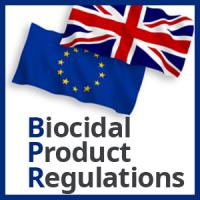We are currently supporting the following disinfection products through the EU Biocidal Products Regulation (BPR):
Product Types |
Countries supported |
Product Link |
|
|
PT2 & PT4 | Under EU-BPR review, currently available for sale Europe wide | CLICK HERE |
|
PT2 & PT4 | Denmark, Finland, Portugal, Ireland, Belgium, Germany, Sweden, Spain, Italy, Poland, Czech Republic, Netherlands, Norway, Iceland | CLICK HERE |
|
PT2 & PT4 | CLICK HERE | |
|
PT2 & PT4 | CLICK HERE | |
|
Treated Article | EUROPE WIDE | CLICK HERE |
For more information on why we are only supporting certain products, please see below, or contact us for more information.
Please note all other (non-disinfection) products remain available for sale and use in the EU.
Background
The BPR is one of the most stringent regulatory frameworks in the world for companies manufacturing or marketing disinfectants and antimicrobial products. For end users and distributors in the healthcare sector, BPR compliance is crucial – it ensures safety, efficacy, and traceability. However, for many small to medium-sized enterprises (SMEs), engaging with the BPR can be commercially and logistically prohibitive.
In this short article, we unpack why some companies choose to avoid selling certain products into the European Union.
What is the BPR?
The EU BPR governs the marketing and use of products intended to control harmful organisms – bacteria, viruses, fungi etc. – through chemical or biological means. The regulation covers both:
- Biocidal products (e.g., hand sanitisers, surface disinfectants)
- Treated articles (e.g., fabrics impregnated with a biocidal substance)
Before a biocidal product can be sold legally in the EU, its active substance must be approved for the specific product type (PT), and the product itself must be authorised at national or EU level.
This two-step process is both time-consuming and expensive – and it’s a key reason some manufacturers avoid full engagement.
PT2 and PT4
Two product types in particular that are highly relevant in healthcare environments are:
- PT2 (Disinfectants for Hard Surfaces): Includes hand sanitisers, surface disinfectants used in hospitals, public areas, or domestic settings.
- PT4 (Food and Feed Area Disinfectants): Includes disinfectants used on surfaces and equipment in food preparation, handling, and storage environments.
Each product type requires its own set of evaluations, data packages, and authorisation fees. Crucially, even if the same active substance is used, authorisation is not transferable between PTs. For example, a product authorised under PT2 cannot automatically be used in a food-related setting unless it also secures PT4 approval. That can mean double the effort – and double the cost.
Why SMEs can’t always go all in
For large multinationals, BPR compliance may be a cost of doing business. But for SMEs, the financial and administrative burden can be prohibitive. Here’s why:
- High Registration Costs: Dossier submissions, toxicology studies, efficacy testing, and consultant fees can often run into hundreds of thousands of Euros per product.
- Country-by-Country Authorisation: Even once EU-wide approval of an active substance is granted, product authorisations often need to be secured individually in each member state—each with their own timelines, fees, test requirements and national nuances.
- Long and Uncertain Timelines: Product authorisations can take 12–36 months or more, making it difficult for SMEs to plan launches or maintain product continuity.
As a result, many companies choose to prioritise their top-selling products or focus on only a limited number of countries, rather than attempt full EU market penetration. This is what we have chosen to do in relation to our product offering.
Treated Articles
An area which can sometimes cause confusion under the BPR is treated articles, which are products that are not biocidal in themselves but have been treated with a biocidal substance to provide antimicrobial properties. For example, our Endurcide® Antimicrobial Plus Curtains.
Under the BPR treated articles are regulated differently:
- In line with Article 58 of the BPR, treated articles may only be placed on the market if the active substances used in their treatment are approved (or under review) for the relevant product type. Our Endurocide® Curtains are treated with an active substance that meets this criterion.
- While treated articles themselves do not require authorisation, they are still subject to labelling and information obligations under the BPR. For example, if a biocidal claim is made (e.g., antimicrobial protection), the label must clearly state the biocidal function and include the name of the active substance(s) used. We confirm that the labelling of our Endurocide® Curtains is compliant with these requirements.
What Distributors and Buyers need to know
If you are sourcing disinfectants or antimicrobial curtains for healthcare settings in the EU, here are a few key takeaways:
- Check BPR Status: Ensure that the product is either fully authorised under BPR, or that the active substance is under review with appropriate transitional measures in place.
- Understand the Product Type: Make sure the product is approved for the intended use and not just authorised in another context.
- Request Regulatory Documentation: Reputable suppliers should provide product authorisation numbers, safety data sheets (SDS), and evidence of efficacy.
Conclusion: A necessary Regulation, but not without its cost
The BPR plays a critical role in protecting public health and ensuring that disinfectants and biocidal products are effective and safe.
But for SMEs, the complexity, cost, and country-specific hurdles often mean difficult decisions must be made – such as choosing to support only a select number of products or markets.
As a distributor or buyer, understanding these pressures can help you source responsibly and support manufacturers who are making significant investments to do things the right way.

